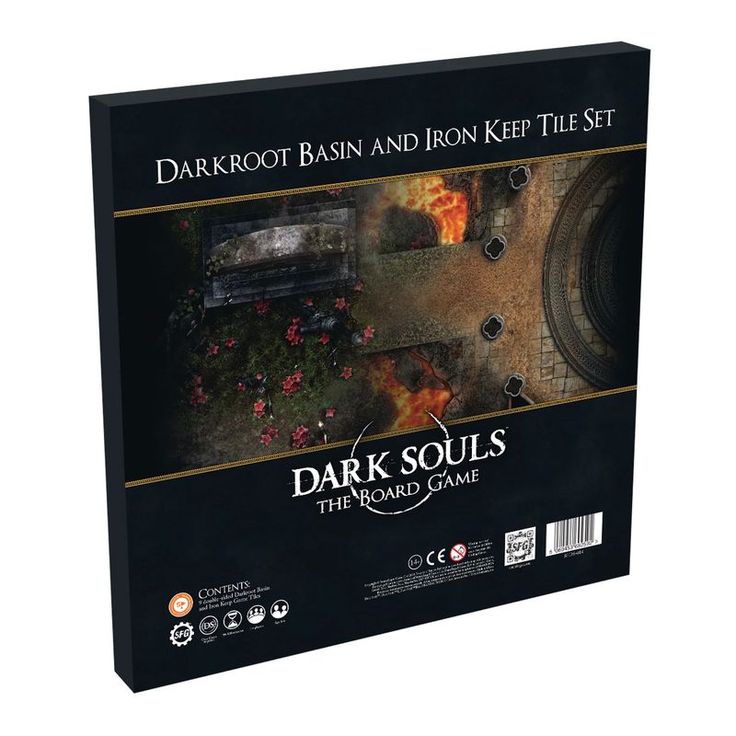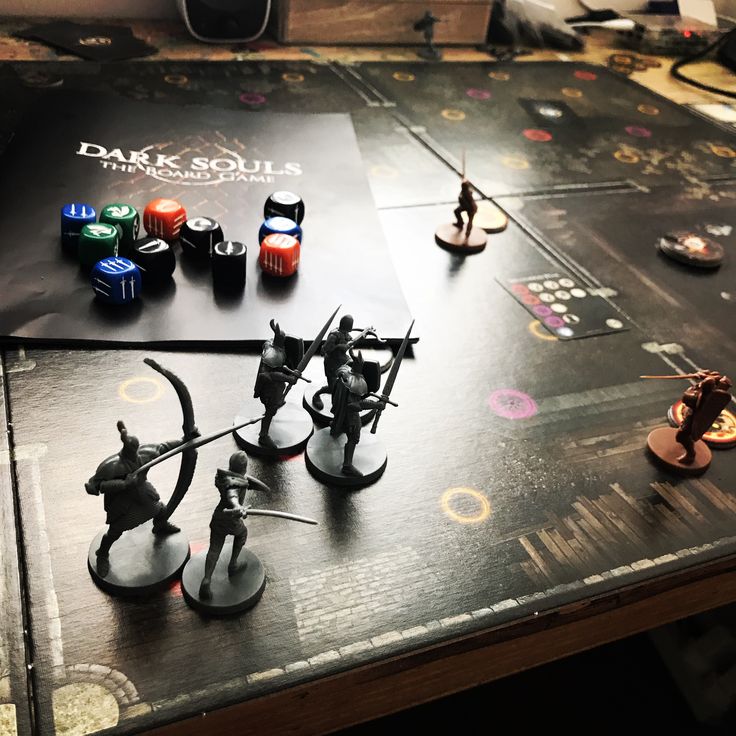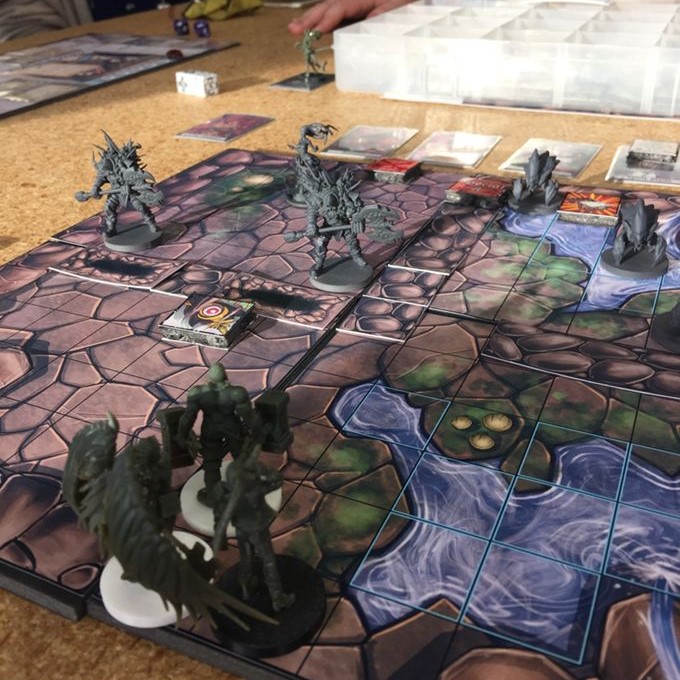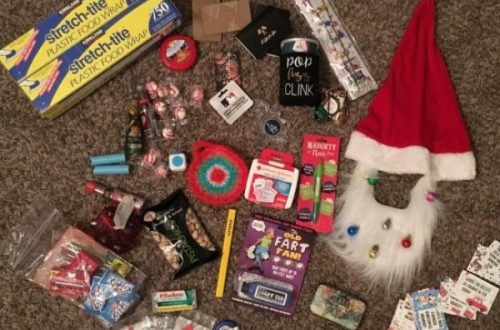Introduction
The Dark Souls Board Game invites players to immerse themselves in a captivating realm of strategy, cooperation, and intense gameplay. Based on the acclaimed video game series, this tabletop game captures the essence of the Dark Souls universe, presenting a fitting challenge for both experienced gamers and newcomers alike. Whether you’re working together to defeat formidable bosses or exploring treacherous landscapes, the stakes are high, and the thrill of adventure is palpable. This article aims to provide essential tips to help you not only survive but also conquer the challenges of the Dark Souls Board Game. With the right strategies, you can elevate your gaming experience and enjoy this innovative journey.

Understanding the Game Mechanics
Overview of Gameplay
The Dark Souls Board Game is designed for 1 to 4 players, making it suitable for both solo play and group sessions. The game typically lasts between 60 and 120 minutes, depending on the number of players and the complexity of the campaign. Here are the key gameplay components:
- Character Selection: At the beginning of the game, players select their character class, which defines their abilities and strategy throughout the game. Character classes include Knight, Warrior, Hunter, and Mage, each with unique strengths and weaknesses.
- Exploration: The game is set on a modular board that players build as they progress. Different tiles are revealed during gameplay, encouraging exploration and adding variety to each session. Players move through various regions, facing enemies, traps, and treasure.
- Combat System: Combat in the Dark Souls Board Game is tactical and requires careful planning. Players must choose when to attack, defend, or use skills, making each decision critical to their survival. The encounter system relies on dice rolls, skill checks, and enemy AI behavior, providing a sense of unpredictability.
Setting Up the Game
Proper setup is essential for a successful gaming session. Follow these steps to prepare:
Prepare the Board
- Choose Your Scenario: Before beginning setup, decide which scenario you will play. Each scenario has unique elements that affect gameplay, including objectives, enemy types, and special rules. Familiarize yourself with the specific requirements outlined in the game manual for the chosen scenario.
- Arrange Modular Tiles: The board comprises modular tiles that can be configured in multiple ways. Carefully arrange the tiles according to the layout specified in your selected scenario. Make sure to double-check placement to avoid errors that could affect gameplay flow.
- Check for Appropriate Settings: Each scenario may have different themes, such as forest, dungeon, or castle. Ensure that the tiles used reflect these themes, enhancing the immersive experience of the game.
- Organize Starting Locations: Identify and mark the starting locations for players as specified in the scenario. This ensures everyone knows where to begin their adventure and sets the stage for initial interactions.
Distribute Components
- Character Sheets: Hand out character sheets to players, ensuring that each player gets the correct sheet corresponding to their chosen character class. Each sheet contains vital information about character abilities, starting items, and health statistics.
- Health and Stamina Tokens: Provide each player with the necessary tokens to track their health and stamina. This will facilitate easy management of resources during gameplay and ensure players have a clear view of their current status.
- Initial Items: Distribute starting items based on the characters’ abilities. These items can significantly impact the players’ strategies from the beginning. Read through the character sheets to confirm that players have their appropriate gear.
- Familiarize Players with Abilities: Allow time for players to explore and understand their character’s strengths and abilities. This discussion can help formulate initial strategies and create a sense of ownership over the characters.
Set Up Enemies
- Determine Enemy Types: Based on the elected scenario, identify which enemies will be included in the game. Each scenario may feature unique foes that fit into specific thematic groups.
- Place Enemy Miniatures: Position enemy miniatures on the board according to the instructions provided in the scenario setup. Pay attention to placement as strategic positioning can introduce dynamics that enhance or complicate gameplay.
- Use Enemy Tokens: In addition to miniatures, use tokens for additional enemy types or to represent enemy actions. This will help streamline tracking enemy health and actions, ensuring that players can keep focus on the main game.
- Incorporate Environmental Pieces: Set up any environmental elements integral to the scenario, such as obstacles, traps, or treasure locations. These pieces can create opportunities for engagement, challenge players, and enhance the immersive experience of the game.
Gather Resources
- Collect Tokens for Items and Treasure: Gather all necessary tokens that represent various in-game items, treasures, and resources. This includes healing items, equipment upgrades, and collectibles that players may discover throughout their journey.
- Organize Accessibility: Arrange the tokens in a way that allows players to easily access them during gameplay. Using trays or containers can help manage the tokens and prevent clutter on the main gaming area.
- Prep Resource Pool: Create a communal resource pool for items that might be discovered during the game. Ensure that tokens are visible and organized to facilitate quick access when players want to acquire new abilities or health resources.
- Label Resources: If necessary, label the different types of tokens to assist players in understanding what each represents. This clarity allows for a smoother learning experience and helps players make informed decisions while playing.
Essential Tips for Survival
1. Know Your Character
Understanding your character is crucial for success. Here’s how to leverage your character’s strengths:
- Familiarize Yourself: Read through your character sheet and comprehend their unique abilities. Each class has distinct skills that can influence game strategy.
- Play to Strengths: If you’re playing as a Knight, focus on aggressive front-line tactics. If you are a Mage, utilize spells selectively to deal damage or control opponents from a distance. Playing to your strengths is vital.
2. Resource Management
Resource management is a core challenge in the Dark Souls Board Game. Managing health, stamina, and items effectively will increase your chances of survival:
- Monitor Health: Keep a close eye on your health and healing items. Don’t hesitate to use healing items when necessary, as neglecting your health can lead to defeat.
- Conserve Stamina: Stamina is consumed with each action taken. Avoid overcommitting to attacks; instead, plan your moves to ensure you can react defensively when needed.
- Appropriate Item Use: Utilize items wisely and reserve powerful items for critical moments. Consider your strategy before consuming an important resource.
3. Effective Teamwork
Cooperation is vital in the Dark Souls Board Game. Working effectively with your team can dramatically improve your chances of success:
- Coordinate Strategies: Discuss tactics with your teammates. Each character has unique abilities that can be effectively combined for maximum impact.
- Support Each Other: Provide assistance to allies when they are struggling. If one character is low on health, ensure they receive healing resources promptly.
- Communicate During Encounters: Discuss who will tackle specific enemies or objectives as a team to avoid chaos. Clear communication can prevent mistakes and ensure overall efficiency.
Engaging with the Game Environment
1. Explore Thoroughly
Exploration is a significant element of the gameplay experience. Players should take the time to engage with the environment in several ways:
- Investigate Every Tile: Hidden treasures, traps, and quests can be found throughout the board. Exploring thoroughly can yield rewards that enhance your abilities.
- Search for Loot: Looting killed enemies can provide essential equipment upgrades and resources. Prioritize searching for loot before moving to the next area.
2. Learn Enemy Patterns
Studying enemy behaviors and attack patterns will enable better tactical choices during gameplay:
- Observe Attacks: Take note of enemy attack ranges and patterns during encounters. Understanding their limitations can give players opportunities to dodge effectively.
- Plan Attacks: Once you comprehend enemy behavior, you can plan counterattacks more efficiently. Combine strategies with teammates for effective results.
1. Preparation is Key
Boss encounters are thrilling moments in the Dark Souls Board Game that can dictate the outcome of the session:
- Stock Up on Resources: Prior to facing a boss, ensure players are equipped with healing items, buffs, and any necessary gear. Success often hinges on proper preparation.
- Communicate Roles: Assign roles during the boss battle based on character strengths. Tanks should take the frontline, while damage dealers and supporters can remain safe.
2. Adapting to the Boss Fight
Strategy is paramount during boss fights where the rules change quickly:
- Study Attack Patterns: Bosses have distinct attack patterns that players should be mindful of. Studying these can help players predict moves and avoid damage.
- Use Special Abilities at Critical Times: Save character abilities for critical moments during the fight. Leveraging these abilities wisely can provide an advantage.
Enhancing the Replayability
1. Variety of Scenarios
The Dark Souls Board Game offers an expansive variety of scenarios to experience, enhancing replayability:
- Choose Different Campaigns: Experiment with different storylines and missions during each session. This keeps the gameplay fresh and engaging.
- Dynamic Combat Challenges: Regularly changing mission objectives creates new experiences, giving players opportunities to adjust strategies based on unique encounters.
2. Character Development
Character progression is rewarding and adds depth to the gaming experience:
- Unlock New Abilities: As players progress through campaigns, they can earn points to unlock new skills and enhancements for their characters.
- Build Custom Strategies: Players can customize their characters with items, creating unique strategies that evolve over time.
Conclusion
In summary, the Dark Souls Board Game is a thrilling experience filled with strategic depth, cooperative challenges, and intense gameplay. By understanding your character, managing your resources effectively, and employing teamwork, you can navigate the challenges presented by the game successfully.
Use these tips to enhance your gaming experience while diving into the rich lore and immersive world of Dark Souls. Embrace the excitement of each gaming session, engage fully with your team, and enjoy the thrill of adventure. Whether you’re facing powerful bosses or uncovering hidden treasures, the Dark Souls Board Game will keep you on the edge of your seat.
Conquer the darkness, savor the adventures, and may your strategies lead you to victory! Happy gaming!








